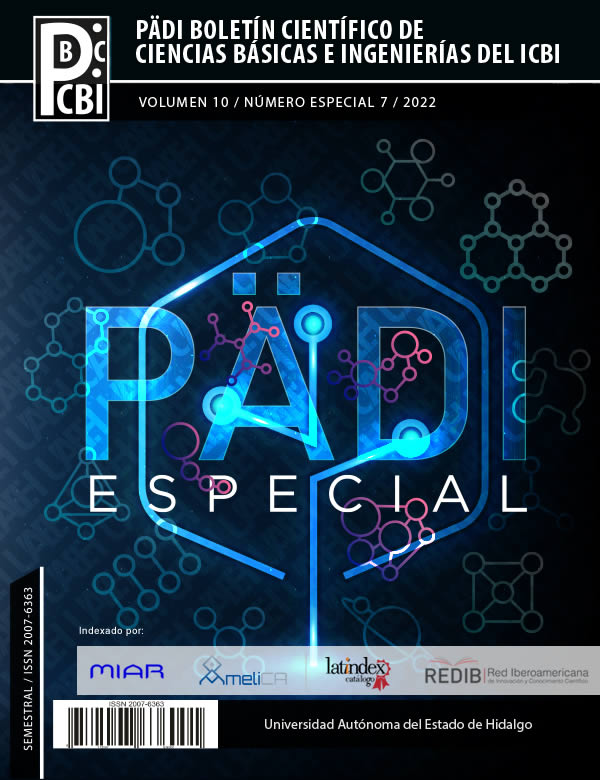Radiolytic degradation of 4-nitrophenol in aqueous solution
Abstract
The degradation of 4-nitrophenol was induced by ionizing radiation based on advanced oxidation processes, monitored by liquid chromatography and chemical oxygen demand. Aqueous solutions 0.2 mmol/dm3 of 4-NF in aerated environments, free of oxygen and saturated with N2O, were irradiated at different doses. By-products were identified using liquid chromatography equipment coupled with a diode array detector. The results showed that the degradation was affected by the environment in which the solution was irradiated. In addition, the degradation occurred faster in the saturated solution with N2O since in this solution it is highly oxidizing, which was determined by the negative slopes obtained by plotting the chemical oxygen demand as a function of the dose applied to the sample, resulting - 0.346, -0.227 and -0.149 mg O2 L-1 min-1 for irradiated solutions saturated with N2O, aerated and oxygen-free.
Downloads
References
Albarrán, G., Mendoza, E. Procesos de oxidación avanzados para la purificación de agua: revisión. Avances en Ciencia e Ingeniería aceptado, por publicar.
Albarrán, G. & Mendoza, E. (2019) Radiolytic oxidation and degradation of 2,4-dichlorophenol in aqueous solutions. Environmental Science Pollution Research 26, 17055-17065. https://doi: 10.1007/s11356-019-04845-4
Albarrán, G. & Mendoza E. (2020) Radiolytic degradation of chlorobenzene in aerated and deoxygenated aqueous solutions. Environmental Science Pollution Research 27, 22855-22864. https://doi.org/10.1007/s11356-020-08227-z
Albarrán, G. & Mendoza E. (2021) Radiolysis induced degradation of 1,3-dichlorobenzene and 4-chlorophenol in aqueous solution. Radiation Physics and Chemistry 182, 109318. https://doi.org/10.1016/j.radphyschem.2020.109318
Bustillo-Lecompte, C. (2020). Advanced Oxidation Processes – Applications, Trends, and Prospects. IntechOpen Book Series. https://doi10.5772/intechopen.85681
Buxton, G. V., Greenstock, C. L., Helman, W. P. (1988). Critical Review of Rate Constants for Reactions of Hydrated Electrons, Hydrogen Atoms and Hydroxyl Radicals in Aqueous Solution. Journal Physical Chemical Reference. Data. 17 (2), 512-886.
Ge, F., Zhu, L., Wang, J. (2008). Distribution of chlorination products of phenols under various pHs in water disinfection. Desalination 225, 156-166. https://doi.org/10.1016/j.desal.2007.03.016
Janata, E & Schuler,R.H. (1982). Rate constant for scavenging eaq- in nitrous oxide-saturated solutions. The Journal of Physical Chemistry. 86, 2078-2084. https://doi.org/10.1021/j100208a035
Kurt, Z. & Spain, J.C. (2013). Biodegradation of Chlorobenzene, 1,2-Dichlorobenzene, and 1,4-Dichlorobenzene in the Vadose Zone. Environmental Science & Technology. 47 (13), 6846-6854. https://doi.org/10.1021/es302897j
Nuñez-Gaytan, A.M., Vera-Avila, L.E., García de Llasera, M., Covarrubias-Herrera, R. (2010). Speciation and transformation pathways of chlorophenols formed from chlorination of phenol at trace level concentration. Journal of Environmental Science and Health, Part A 45, 1213-1222. https://doi.org/10.1080/10934529.2010.493785
Pant, R., Pandey, P. & Kotoky, R. (2016). Rhizosphere mediated biodegradation of 1,4-dichlorobenzene by plant growth promoting rhizobacteria of Jatropha curcas. Ecological Engineering. 94 (1-3), 50-56. https://doi.org/10.1016/j.ecoleng.2016.05.079
Wang, L., Zhou, Q., Zhang, B., Li, Z., Chua, H. & Ren, D.M. (2003). The Biodegradation of 1,3-Dichlorobenzene by an Adapted Strain Bacillus cereus PF-11 Derived from Town-Gas Industrial Effluent. Journal of Environmental Science and Health, Part A: Toxic/Hazardous Substances & Environmental A. 38 (9), 1837-1848. https://doi.org/10.1081/ESE-120022882
Woods, R. J., Pikaev, A. K. (1994). Applied Radiation Chemistry: Radiation Processing. New York: A Wiley Interscience Publication. ISBN: 978-0-471-54452-4.
Ziagova, M. & Liakopoulou-Kyriakides, M. (2007). Comparison of cometabolic degradation of 1,2-dichlorobenzene by Pseudomonas sp. and Staphylococcus xylosus. Enzyme and Microbial Technology. 40 (5), 1244-1250. https://doi.org/10.1016/j.enzmictec.2006.09.004














